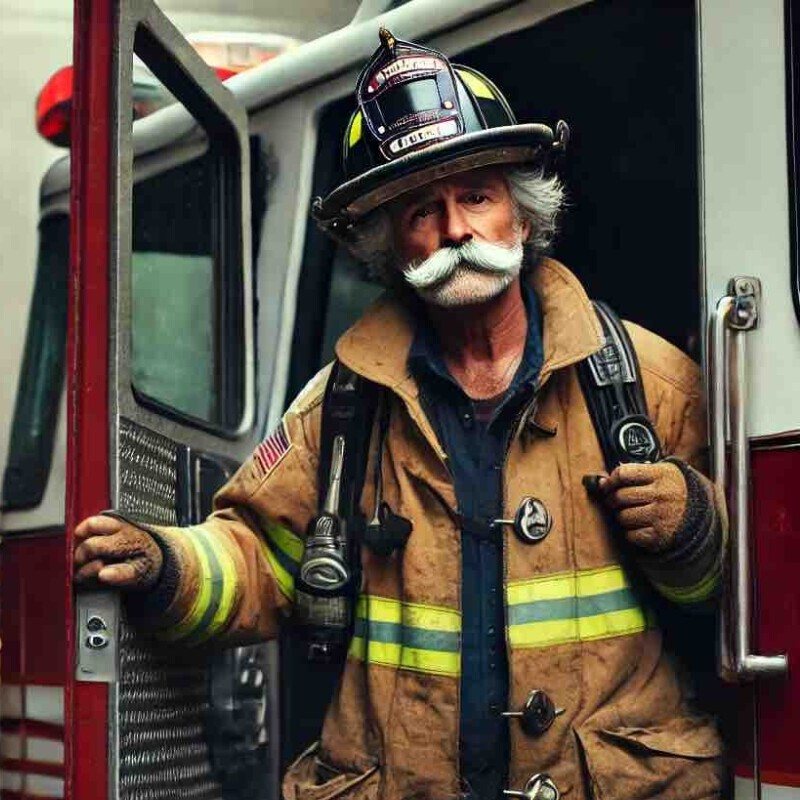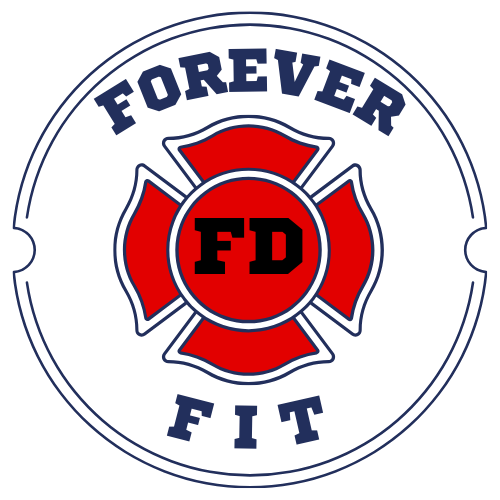Retirement brings a slew of changes, and for firefighters, these shifts can be quite significant. Physically, the body has gotten used to the adrenaline rush and physical demands of the job. Post-retirement, you might notice changes in your metabolism and overall energy levels.
Being a firefighter isn’t just a job; it’s a way of life that often involves high-stress situations and irregular eating habits. These factors play a role in long-term health even after retiring. So, judging your fitness level and acknowledging these changes is a wise first step.

Metabolic shifts are real and inevitable with age, more so after leaving a high-energy job. Metabolism might slow down, causing weight to creep up unexpectedly. It’s essential to understand how your body has changed since retiring. Accepting that your body may not respond like it used to when you were active in service can be crucial.
Before setting any fitness goals, it’s important to assess where you stand. Understanding your baseline health with the help of a healthcare provider can pave the way to set realistic goals. Set aside that firefighter’s mindset of pushing through and instead focus on understanding what your body needs now.
Setting Realistic and Achievable Weight Loss Goals
Crafting goals that align with your current health profile is key. It’s not about comparing yourself to your former firefighter self or any of the gym bros your working out alongside, but about considering where you are now. Tailoring goals to fit your personal needs and abilities can help pave a realistic path to success.
Getting input from a great coach can make all the difference. They can help you understand your body’s present condition and suggest a weight loss strategy that maintains health and energy without compromising muscle mass. This professional insight ensures you’re on the right path.
Muscle mass often gets lost in the weight loss journey, especially as we age. Striking a balance between shedding pounds and preserving muscle is critical. Incorporating strength training exercises will not only prevent muscle loss but also support metabolism.
Flexibility in your goal timelines is just as important as the goals themselves. Life happens, things change, and sometimes progress isn’t linear. Being adaptable with your timelines allows you to stay committed without unnecessary stress. Recognize that small, steady progress is still progress and worth celebrating.
Creating a Sustainable Weight Loss Plan
Developing a balanced diet that caters to the nutritional needs of older adults is foundational. It’s less about strict dieting and more about healthy choices that fuel your body efficiently. Think colorful veggies, lean proteins, and whole grains that provide sustained energy.
For retired firefighters, lower-impact exercises are a great fit. Swimming, cycling, or even brisk walking can keep you active without causing stress on your joints. You’re moving towards health, not trying to requalify for the academy.

Mental health often plays a big role in managing weight, something that’s slightly overlooked. Feeling good mentally can help you stay motivated. Incorporate activities that support mental wellness, like mindfulness or even hobbies that make you happy.
Don’t underestimate the role of community and peer support in your journey. Engaging with people who share similar goals or being a part of a support group can provide encouragement and accountability. It’s easier to stay on track when you’re not going it alone.
Tracking Progress and Adjusting Goals
Keeping an eye on progress can really keep you motivated. Recording your weight, measurements, and food intake is necessary when you are trying to change your body composition. You should even track when maintaining weight as well, but it doesn’t need to be as meticulously done. Apps, journals, or even simple notes can be effective methods. The best tracking method is just like the best diet; it’s the one you do consistently.
Every milestone you hit is worth celebrating, no matter how small it may seem. Recognition of these achievements boosts morale and encourages continued effort. Treat yourself to something special that’s meaningful to you.
Setbacks are part of the journey, and what’s important is how you respond to them. Shit happens, but it’s about getting back on track with renewed dedication. Overeating one meal is just that—one meal. Life goes on, and tomorrow is another opportunity to crush your goals. Remember that health and fitness is a lifelong game, and it’s one you never ‘win’. You always keep learning, growing, and striving to improve.
Always have a growth mindset and keep moving forward. You can live a fit and healthy life for sure along the way.
Let me know your thoughts on this article. Leave a comment.

This article really resonates with the reality of life after a physically demanding career like firefighting. The emphasis on adjusting to a new pace and being kind to your body post-retirement is spot on. I’ve seen firsthand how challenging it can be to shift from an active job to a slower pace, and understanding those changes is crucial. When it comes to preserving muscle mass while losing weight, do you have any specific strength-training exercises you recommend for retirees who might be dealing with joint issues? I’d love to hear your thoughts on balancing low-impact workouts with maintaining strength!
I’m so glad this article resonated with you! The transition from such a physically demanding career like firefighting to a slower-paced retirement is definitely a big adjustment, and being kind to your body during that process is so important. I hear you on the challenge of preserving muscle mass while dealing with joint issues—it can be tricky but totally manageable with the right approach!*
For retirees with joint concerns, focusing on low-impact strength training exercises can really help. Things like resistance band exercises, bodyweight movements (like squats or modified push-ups), and even swimming are excellent options. If you have access to a gym, machines like the leg press or cable machines can offer good support and control, making them easier on the joints. Unilateral exercises—working one side of the body at a time—can also help with balance and stability while keeping the impact low.*
In terms of finding that balance, incorporating functional strength training into your routine can be a game changer. It not only helps maintain muscle but also improves mobility and joint health. If you’re looking for more detailed workout ideas, [ForeverFitFD](https://foreverfitfd.com) has some great insights specifically geared towards retirees, especially those recovering from the intensity of firefighting. Their approach to joint-friendly exercises could be really helpful for you!*
Would love to hear what exercises have worked for you in the past or if you’ve tried any of these before!